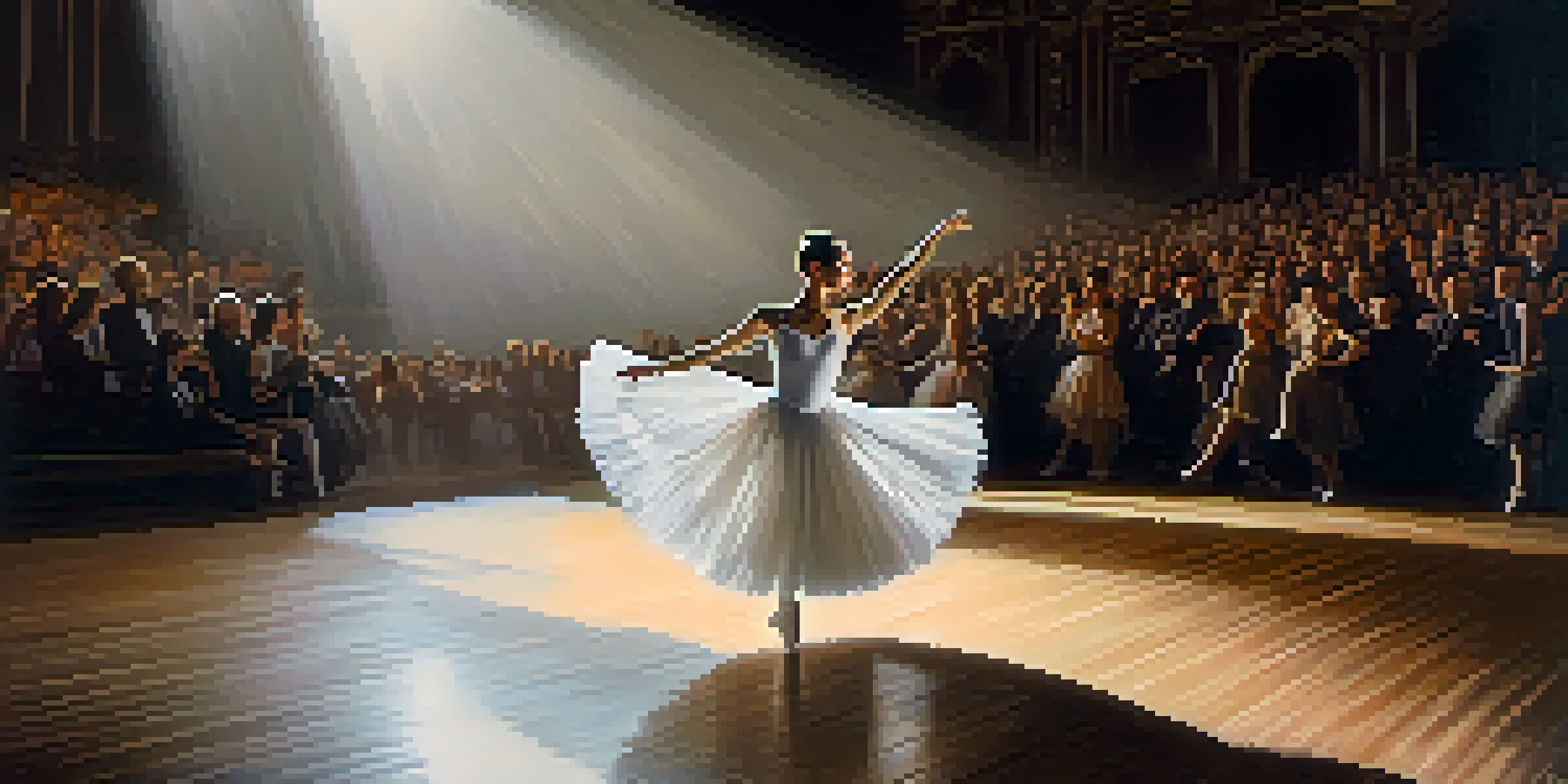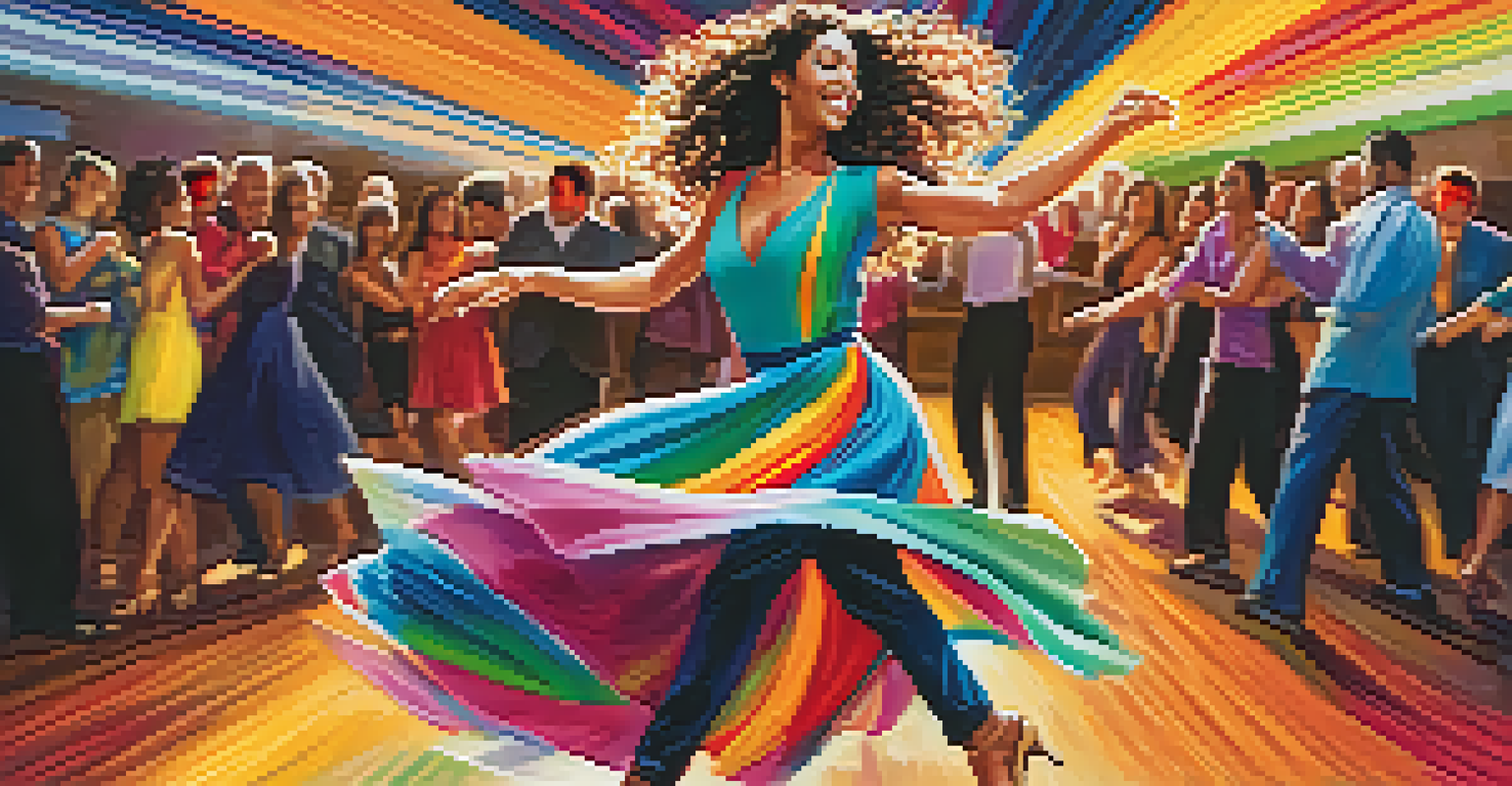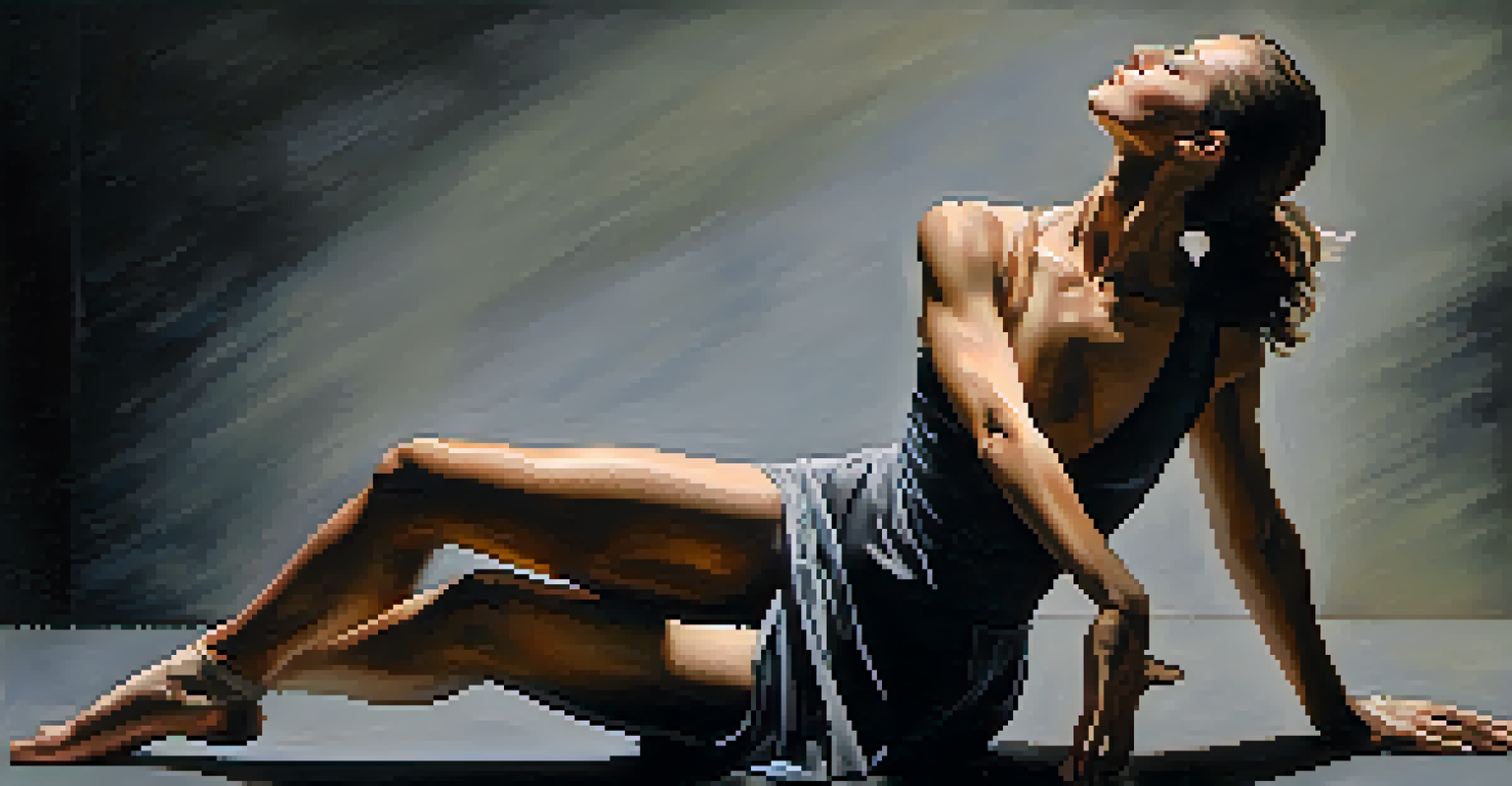The Role of Music in Enhancing Emotional Expression in Dance

Understanding the Connection Between Music and Dance
Music and dance have been intertwined throughout history, creating a powerful medium for emotional expression. When dancers move to music, they don't just follow the rhythm; they embody the emotions conveyed through melodies and harmonies. This synergy allows performers to communicate complex feelings that words often fail to express, making the connection between the two art forms essential.
Dancing is like dreaming with your feet.
For instance, think about a ballet performance set to Tchaikovsky's 'Swan Lake.' The music's sweeping crescendos and delicate notes evoke a range of emotions, from joy to sorrow, which dancers interpret through their movements. This interplay transforms the performance into a rich tapestry of feeling, with each note enhancing the visual storytelling of the dance.
Ultimately, the connection between music and dance is not merely artistic; it's a fundamental aspect of human experience that resonates deeply with audiences. This emotional bond is what draws people to performances, making them feel as though they are part of something larger than themselves.
How Music Shapes the Mood of Dance
The mood of a dance is heavily influenced by the music accompanying it. Different genres and tempos can evoke various emotional responses, guiding the dancer's interpretation and audience perception. For example, a lively salsa tune invites energetic and vibrant movements, while a slow waltz encourages graceful, flowing motions that elicit a sense of romance.

Consider a contemporary dance piece set to a haunting ballad. The slow, poignant tempo allows dancers to explore themes of loss and longing, using their bodies to reflect the emotional weight of the music. Here, the music doesn't just support the dance; it becomes a central character in the narrative.
Music and Dance: A Deep Connection
The synergy between music and dance allows performers to express complex emotions that words often fail to convey.
By understanding how different musical elements affect the mood, choreographers can select pieces that enhance the intended emotional experience, creating a more powerful performance. This intentional pairing of music and dance is what makes each performance unique and resonant.
The Role of Rhythm in Dance Movement
Rhythm is the heartbeat of both music and dance, guiding movements and ensuring cohesion. Dancers often rely on the rhythmic structure of music to time their steps and create patterns that resonate with the audience. A strong, driving beat can inspire powerful leaps or sharp turns, while a softer rhythm may lead to more fluid, lyrical movements.
Music can change the world because it can change people.
Imagine a tap dancer performing to a fast-paced jazz tune. The syncopated rhythms propel the dancer into intricate footwork that captivates the audience. Each tap resonates with the music, transforming the performance into a dynamic conversation between the dancer and the sound.
In this way, rhythm serves as a bridge between music and dance, giving structure to the emotional expression. It allows dancers to convey excitement, tension, or calmness, making rhythm an essential element in the art of dance.
Emotional Storytelling Through Dance and Music
Dance is a powerful storytelling medium, and music enhances its narrative potential. When combined, they create a rich emotional landscape that allows performers to convey complex stories and feelings. For instance, a piece inspired by loss may use somber music paired with slow movements, visually representing the weight of grief.
Think about a theatrical dance performance that tells the story of a journey. The music shifts from hopeful melodies to darker tones, mirroring the character's emotional evolution. The dancer's movements respond to these shifts, making the audience feel the intensity of the narrative.
Rhythm Guides Dance Movements
Rhythm serves as the heartbeat of dance, guiding movements and creating a dynamic interplay between dancers and music.
This storytelling aspect is what makes dance so compelling. The combination of music and movement can transport viewers into the emotional core of a story, making the experience not just visual but deeply felt.
Cultural Influences on Dance Music and Expression
Different cultures have unique musical styles that significantly influence their dance forms. From African drumming to classical Indian music, each genre carries its own emotional weight and narrative style, shaping the way dancers express feelings. This cultural diversity adds richness to the dance world, offering varied perspectives on emotional expression.
For instance, Flamenco dance, rooted in Spanish culture, is characterized by passionate music that reflects themes of love and sorrow. The dancers' movements embody these emotions, creating a visceral connection between the music and the dance. This cultural synergy allows for a deeper interpretation of emotions within each dance form.
By embracing these cultural influences, dancers can explore a vast array of emotional expressions, enriching their performances and connecting with a broader audience. This cultural tapestry is what makes the dance community so vibrant and diverse.
The Psychological Effects of Music on Dancers
Music has a profound psychological impact on dancers, influencing their emotions and performance. Listening to certain tracks can evoke memories, inspire creativity, or even boost confidence, all of which are crucial for expressing emotions on stage. This psychological connection makes the selection of music a vital part of the dance process.
For example, a dancer preparing for a performance might listen to empowering music to build confidence and focus. This pre-performance ritual not only enhances their emotional state but also translates into their movements, allowing them to express those feelings authentically.
Cultural Influence on Dance Expression
Different musical styles shaped by culture enrich dance forms, allowing for diverse emotional expressions in performances.
Understanding the psychological effects of music can help dancers choose pieces that resonate with their emotional state, ultimately leading to more powerful performances. This connection between mental well-being and artistic expression highlights the importance of music in the world of dance.
Music as a Tool for Emotional Exploration in Dance
Many dancers use music as a tool for emotional exploration, allowing them to connect with their inner feelings and express them through movement. This process often leads to personal growth and self-discovery, as dancers interpret music in ways that resonate with their emotional journeys. It's a deeply personal and transformative experience.
For instance, improvisational dance sessions set to various musical styles can help dancers unlock emotions they may not have consciously acknowledged. By moving to the music, they explore their feelings in a safe and creative space, resulting in an authentic expression of their emotional landscape.

This exploration not only enhances their performance but also fosters a deeper understanding of themselves. Music serves as a catalyst for emotional expression, turning the dance floor into a space for healing and self-discovery.